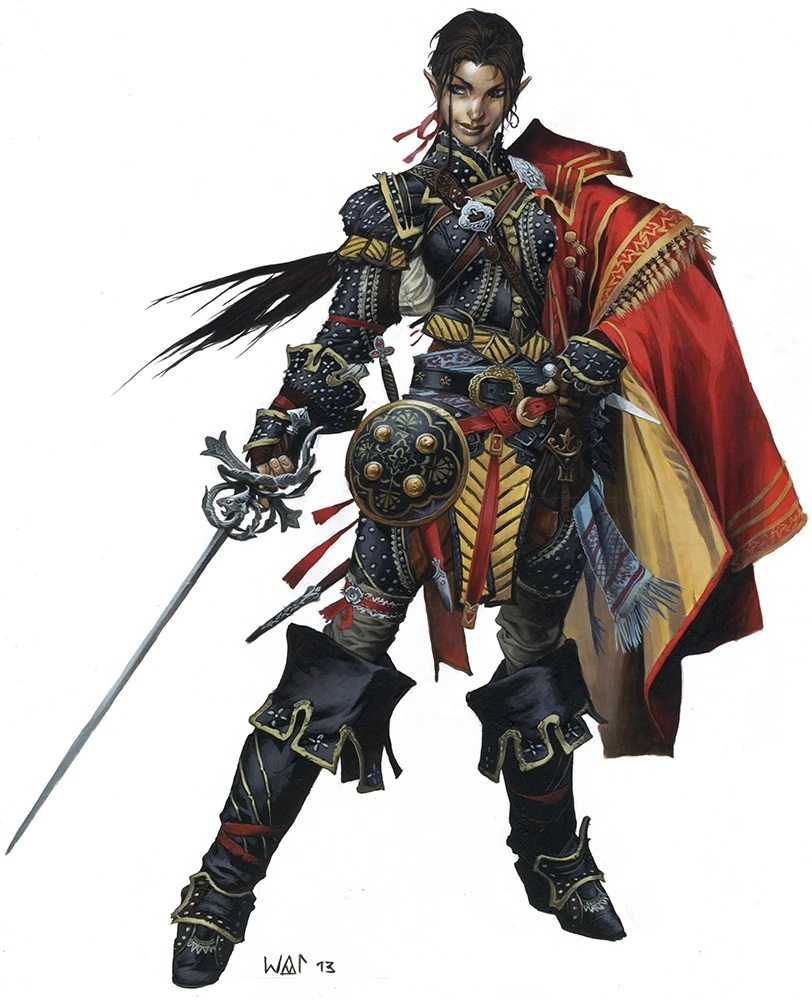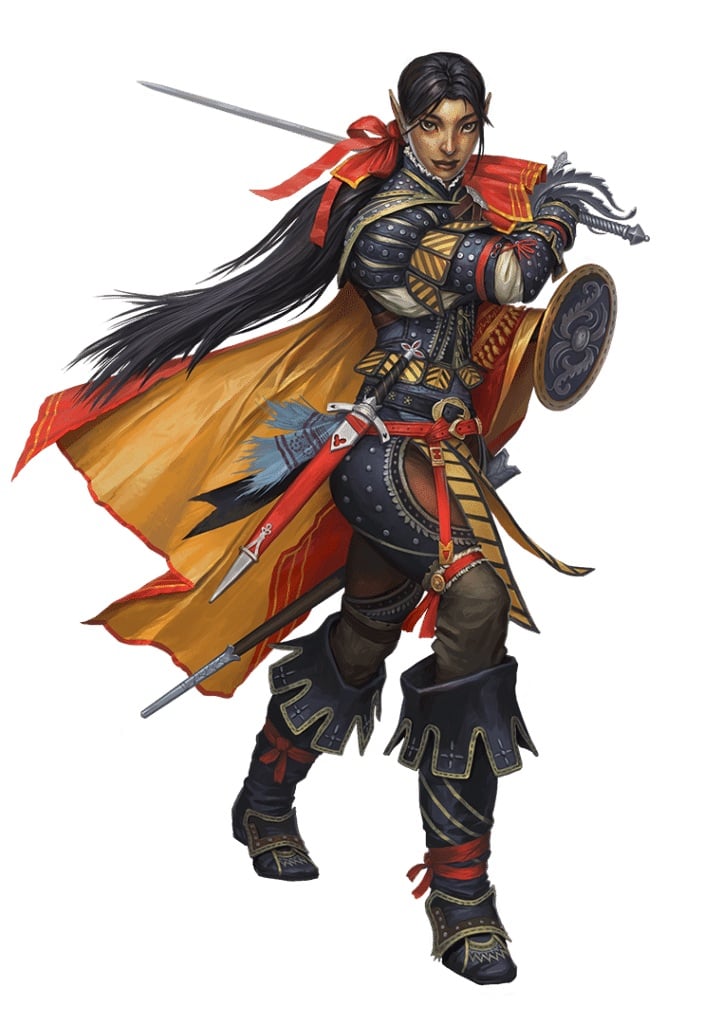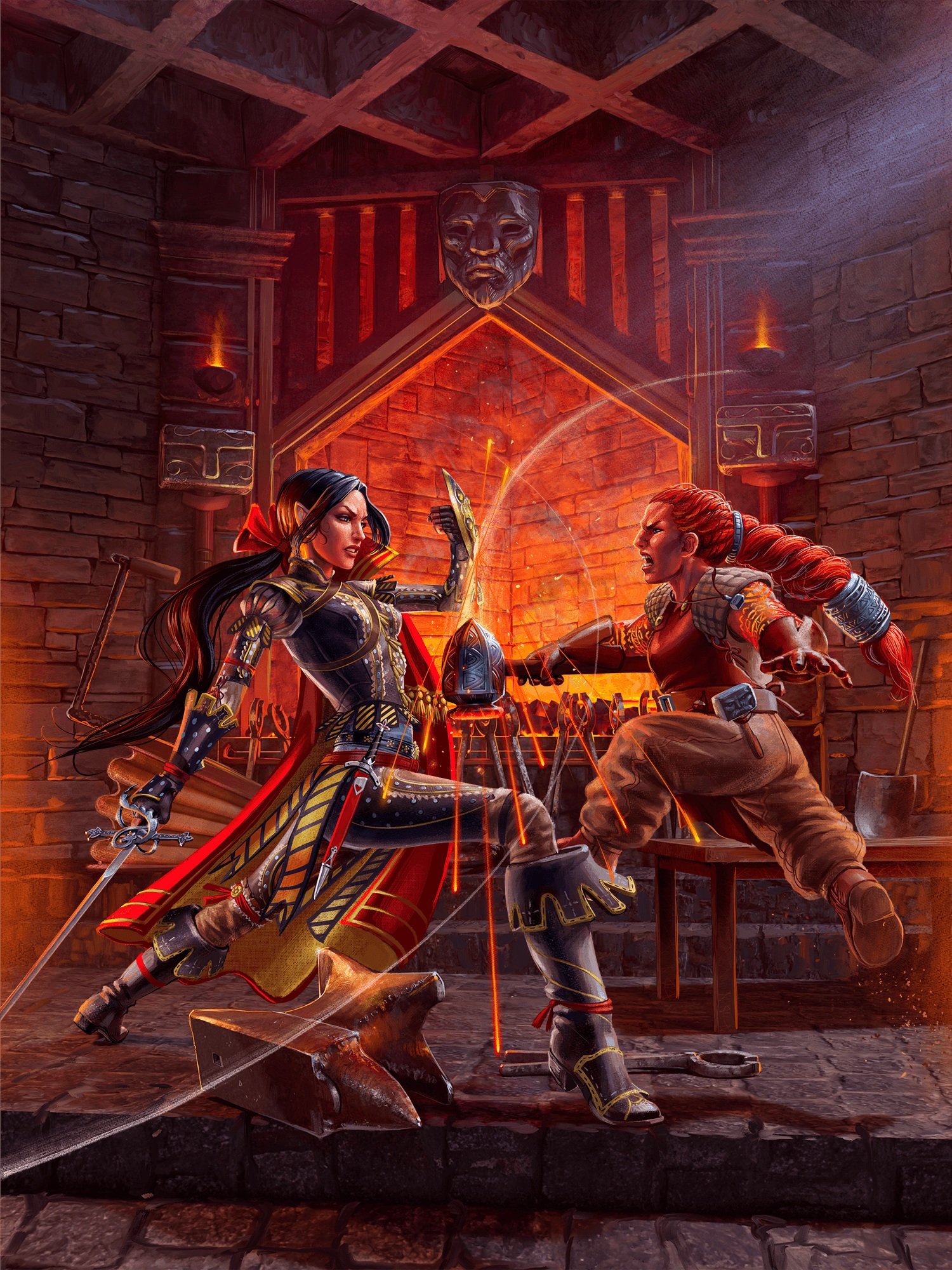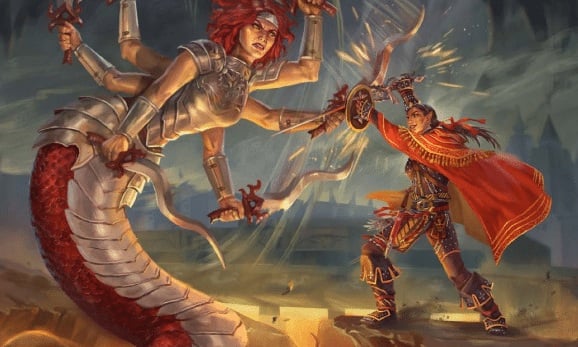Whatever you’re about to do, do it with a little more style and panache, and maybe you can keep up with the Pathfinder Swashbuckler.
There are many ways to play a physical and melee-heavy character in Pathfinder. But the Swashbuckler takes the melee archetype and does things a little differently. This isn’t a class of brute force and heavy armor. Instead, Swashbucklers treat battle as a dance, where style, grace, and flair are almost as important as winning the fight itself. Fancy moves may distract or throw your foe off balance. While your natural charm will help make friends of or intimidate everyone around you.
Jump to…
The Pathfinder Swashbuckler Basics
Known for fancy footwork and a dance-like fighting style, the Pathfinder Swashbucklers starts their adventure a boost to Dexterity. But since this style serves directly to impress, confuse, or intimidate the people around them, it wouldn’t be a bad idea for a player to make sure their Charisma is also decently high.
At character creation they have expert-level training in Perception as well as their Will and Reflex saving throws. The Swashbuckler will also start out trained in Fortitude, Acrobatics, Simple Weapons, Martial Weapons, Unarmed Attacks, Light Armor, Unarmored Defense, one skill determined by their style, and a number of additional skills equal to their Intelligence modifier plus four.
In combat, Swashbucklers are likely to be some of the most nimble members of a party. This may mean getting into the perfect position from which to strike a devastating blow, or always managing to avoid an enemy’s blow and quickly return one of their own.
In non-combat situations, the party’s Swashbuckler is likely to navigate social situations like a pro. This may mean blending in with high society, masterfully creating a distraction, laying on the charm, or intimidating someone. They will also usually keep a keen eye on their surroundings, but a Swashbuckler is more likely to lean into a situation than avoid it.
Why sneak by when you can make everyone think you’re supposed to be there with flair? Between jobs, they are just as likely to be schmoozing and socializing as they are to be training and repairing their belongings. Swashbucklers have a reputation to maintain, and if not they have a reputation to build. Sure, that means tireless physical training. But sometimes it also means chatting up the right people and greasing the right palms.
Panache
How the Swashbuckler wins the battle is almost if not as important as the fact that they do win. When they perform actions in their particular style, they can leverage moments of performance and flair into deadly maneuvers called panache.
Panache is gained by performing actions that have the bravado trait. These will often be determined by the Swashbuckler’s style. But a GM can also determine that an action is particularly daring and spectacular and allow it to take on a bravado trait.
Swashbuckler’s Style
Like a snowflake, each Pathfinder Swashbuckler has a style that is all their own. That style determines the additional actions they can use to gain panache and represents the kind of training they have undertaken and the kinds of skills they may have.
Battledancer: This kind of Swashbuckler handles every situation with grace and turns every fight into a dance. They are training in the Performance skill and gain the Fascinating Performance skill feat. Performance triggers their bravado trait.
Braggart: Swashbucklers with the braggard style will boast, taunt, and needle their foes psychologically. They are training in the Intimidation skill and will gain the bravado trait by demoralizing their foe.
Fencer: This style allows the Swashbuckler to move carefully, feinting openings, and luring their foe into inopportune attacks. They are trained in the Deception skill and get the bravado trait when they create a distraction or feint.
Gymnast: With this style, Swashbucklers can maneuver and reposition themselves around the battlefield in a way that bewilders their foes. They are trained in the Athletics skill. And they get the bravado trait when they grapple, shove, trip, or reposition themselves against their foe.
Rascal: This kind of Swashbuckler isn’t adverse to using underhanded tactics to get the edge. They are trained in the Thievery skill and gain the Dirty Trick general feat. When they use Dirty Trick they gain the bravado trait.
Wit: Swashbucklers who use this style tend to be friendly, clever, and always know just what to say. Their wit leaves their enemies perplexed and unprepared for their incoming attacks. They are trained in Diplomacy and gain the Bon Mot skill feat. When they use Bon Mot they gain their bravado trait.
Multiclassing a Pathfinder Swashbuckler
For the adventurer who wants to use a little extra flair and style, Swashbuckler may be the perfect multiclass. A Barbarian would gain a few stylish and devastating finishing moves this way. An Investigator may add a little more showmanship to their case-solving style. And spellcasters would benefit from an entirely new repertoire of attacks and abilities.
Characters multiclassing as a Swashbuckler gain access to the feats Swashbuckler Dedication, Basic Flair, Finishing Precision, Advanced Flair, Swashbuckler’s Riposte, Swashbuckler’s Speed, and Evasiveness.
How to Play a Pathfinder Swashbuckler
The Pathfinder Swashbuckler is theater kid of playable classes. And I mean that as a compliment. If you’re looking for a way to add a little style and a little camp to your character and have it work as part of the adventure instead of take away from it, the Swashbuckler is the class for you.
Subscribe to our newsletter!
Get Tabletop, RPG & Pop Culture news delivered directly to your inbox.
As always, picking the right subclass from the start—in this case, the style—is important. If you don’t have a solid character in mind, consider what kind of damage you’d like them to do and what extra skills you’d like to have. And from there, just think dramatic thoughts. What would happen next if this were a campy old movie or a musical? What would make only an anime character look cool? Is there a chandelier to swing from?! Aim for the kind of over-the-top that might border on frustrating for your DM. But know that now they’ll have to acknowledge it as part of your character!
Happy adventuring!
Don’t Miss:
Read more at this site




